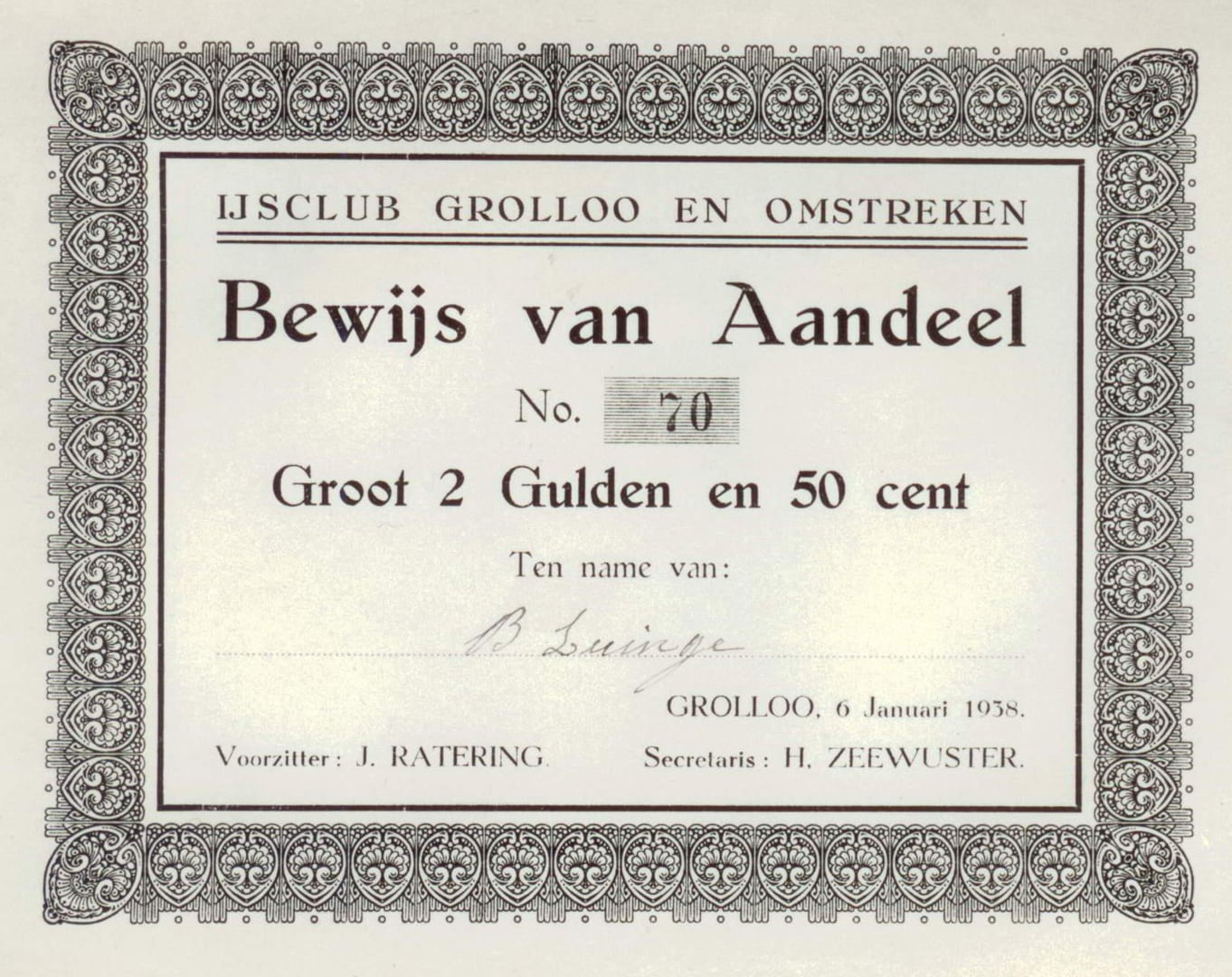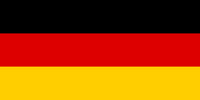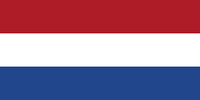Origin of Ice Skating Club Het Evenveen
by Lens Beijering Azn.
preface
At the request of the ice skating association, Mr Lens Beijering Azn. the origins of the ice skating association in 2004 were entrusted to paper. The Beijering family has lived in the farm next to the current ice rink for many years. The written story is in the archives of the ice skating association.
Ice skating club Het Evenveen
The Evenveen ice skating club was founded in 1928. The founders were R. Oeben, B. Zeeuwuster and A.J. Hadders. For skating, use was made of the peat lakes Hoogeveld, Kronenkamp, Gommersveen and on the Drift (Berenkuil gate) and on the back of the dike to the Moere. The last two places were not that big and the peat lakes had the disadvantage that it had to freeze quite a bit before the ice was reliable.
There was a need for a spacious track, with no more than 30 - 50 cm of water on it. In the years before the Second World War, an attempt was made to build a track on the Boermarke plot in Oostereind between the road to Papenvoort and the Kleine Moere recreation center. The said plot, which now has forests on it, was then heathland. Dikes were then built there and a Norton well was built with a pumping installation on it, driven by an electric motor. The electrical line to the Moere passed right in front of the plot.

This was financed by issuing shares in the ice skating association, all of which were later repaid. This turned out to be a major fiasco, because the water drained away as quickly as it was pumped up.
At that time a soil survey would probably have been carried out, but this possibility had not yet been considered.
During and immediately after the Second World War, the situation remained as it was. People skated on the peat ponds.
That changed in 1951. My father, Albert Beijering, was then chairman of the ice skating association and probably also a proxy for the Boermarke. Since he knew the user of every piece of land around Grolloo, he was appointed by Mr Th. van Wijk from Vries was asked to point out the pieces of land in the vicinity of Grolloo that he owned. The aforementioned Van Wijk leased quite a lot of land to various farmers in Grolloo, but did not know where those plots were located. On the occasion of that meeting, my father asked him whether there was the possibility of building an ice rink on the piece of land next to our farm. Mr Van Wijk then gave the hint to come and talk to a delegation from the board. That happened then, it was agreed to build the track there and on a rental price of, I believe, 100 guilders per season from December 1 to March 1.
Then the work could begin. Dikes were constructed around the plot and the water supply had to be arranged.
Since there was no well for water supply in the area and the municipality had an interest in ensuring that this was arranged, it was agreed that a well would be placed in front of the ice rink, so that water was available in the event of a fire. A pipeline was then laid from the central point on the Voorstreek through the former tram track to the well of the ice rink. This was done independently by the residents of Grolloo. The pipes (made of concrete) were first paid for by the ice skating association and later duly reimbursed by the municipality. This was all made possible by a campaign in the village, where people gave rye, oats or money.
A provision had been made from the well for the ice rink so that water could be pumped onto the ice rink. The first year it could be seen that the plot was not level, so that one part had much more water than the other. Discussions were then held with the owner about leveling the plot.The work was carried out in the autumn of 1952 by the Dutch Heidemaatschappij. Part of the costs were subsidized by the D.U.W. (Works Execution Service).
In 1955, electric lighting was installed on the ice rink. This is in view of those who could not skate during the day due to work and having to go to school. The light was connected in the home of the Js family. Kuipers. This only during the time that skating could take place.
In the autumn of 1965 there was a permanent connection to the electricity.
Because the dike on the side of the land of the L. Beijering family Hzn. allowed quite a bit of water to pass through, the ditch at the end of the plot was closed in winter.
The ice rink was improved again in 1982 as part of the Rolde land consolidation. The dike on the side of the land of the L. Beijering family Hzn. has been rebuilt. The peat that was still under the dike was dug away and the trench was skinned with loam. After the dike was constructed again (also with loam), there was no longer any leakage. The entire plot was also drained, with the drainage to the ditch that could be closed on winter days by a tap in the embankment.

At the beginning of my story I mentioned that the ice skating club Het Evenveen was founded in 1952. That was not the correct name at the time. The correct name at the time was ice skating association Grolloo and surrounding areas. The name Evenveen was adopted when the new track was constructed. Around 1900, everything to the right of the Amerweg was heathland. Where the track is now located was a peat lake called Het Evenveen. The Grolloër also skated there at the time. I got that knowledge from my parents, who told me about it.
I hope that the association will benefit from this story.
Was signed,
L. Beijering Azn.
Received on March 10, 2004 by chairman H. Zeelenberg.


